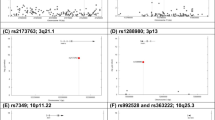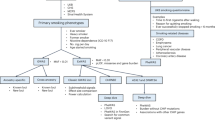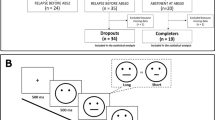Abstract
Galanin modulates dopaminergic neurotransmission in the mesolimbic dopamine system, thereby influencing the rewarding effects of nicotine. Variants in the galanin receptor 1 (GALR1) gene have been associated with retrospective craving severity and heaviness of smoking in prior research. We investigated pharmacogenetic associations of the previously studied GALR1 polymorphism, rs2717162, in 1217 smokers of European ancestry who participated in one of three pharmacogenetic smoking cessation clinical trials and were treated with nicotine patch (n=623), nicotine nasal spray (n=189), bupropion (n=213), or placebo (n=192). The primary endpoint was abstinence (7-day point prevalence, biochemically confirmed) at the end of treatment. Cravings to smoke were assessed on the target quit day (TQD). The longitudinal regression model revealed a significant genotype by treatment interaction (P=0.03). There was a reduced odds of quitting success with the presence of at least one minor (C) allele in the bupropion-treated group (OR=0.43; 95% CI=0.22–0.77; P=0.005) but equivalent quit rates by genotype in the nicotine-replacement therapy groups. This genotype by treatment interaction was reproduced in a Cox regression model of time to relapse (P=0.04). In the bupropion trial, smokers carrying the C allele also reported more severe TQD cravings. Further research to identify functional variants in GALR1 and to replicate pharmacogenetic associations is warranted.
Similar content being viewed by others
Log in or create a free account to read this content
Gain free access to this article, as well as selected content from this journal and more on nature.com
or
References
Bodmer W, Bonilla C (2008). Common and rare variants in multifactorial susceptibility to common diseases. Nat Genet 40: 695–701.
Brown RA, Burgess ES, Sales SD, Whiteley JA, Evans DM, Miller IW (1998). Reliability and validity of a smoking timeline follow-back interview. Psychol of Addict Behav 12: 101–112.
Counts SE, McGuire SO, Sortwell CE, Crawley JN, Collier TJ, Mufson EJ (2002). Galanin inhibits tyrosine hydroxylase expression in midbrain dopaminergic neurons. J Neurochem 83: 442–451.
Crawley JN (1999). The role of galanin in feeding behavior. Neuropeptides 33: 369–375.
Crawley JN (2008). Galanin impairs cognitive abilities in rodents: relevance to Alzheimer's disease. Cell Mol Life Sci 65: 1836–1841.
Ericson E, Ahlenius S (1999). Suggestive evidence for inhibitory effects of galanin on mesolimbic dopaminergic neurotransmission. Brain Res 822: 200–209.
Hawes JJ, Brunzell DH, Narasimhaiah R, Langel U, Wynick D, Picciotto MR (2008). Galanin protects against behavioral and neurochemical correlates of opiate reward. Neuropsychopharmacology 33: 1864–1873.
Heatherton TF, Kozlowski LT, Frecker RC, Fagerstrom KO (1991). The Fagerstrom test for nicotine dependence: a revision of the fagerstrom tolerance questionnaire. Br J Addict 86: 1119–1127.
Holmes A, Heilig M, Rupniak NM, Steckler T, Griebel G (2003). Neuropeptide systems as novel therapeutic targets for depression and anxiety disorders. Trends Pharmacol Sci 24: 580–588.
Jackson KJ, Chen X, Miles MF, Harenza J, Damaj MI (2011). The Neuropeptide Galanin and Variants in the GalR1 Gene are Associated with Nicotine Dependence. Neuropsychopharmacology 36: 2339–2348.
Kalivas PW, Volkow ND (2005). The neural basis of addiction: a pathology of motivation and choice. Am J Psychiatry 162: 1403–1413.
Killen JD, Fortmann SP (1997). Craving is associated with smoking relapse: findings from three prospective studies. Exp Clin Psychopharmacol 5: 137–142.
Lerman C, Jepson C, Wileyto EP, Epstein LH, Rukstalis M, Patterson F et al (2006). Role of functional genetic variation in the dopamine D2 receptor (DRD2) in response to bupropion and nicotine replacement therapy for tobacco dependence: results of two randomized clinical trials. Neuropsychopharmacology 31: 231–242.
Lerman C, Kaufmann V, Rukstalis M, Patterson F, Perkins K, Audrain-McGovern J et al (2004). Individualizing nicotine replacement therapy for the treatment of tobacco dependence: a randomized trial. Ann Intern Med 140: 426–433.
Lori A, Tang Y, O'Malley S, Picciotto MR, Wu R, Conneely KN et al (2011). The galanin receptor 1 gene associates with tobacco craving in smokers seeking cessation treatment. Neuropsychopharmacology 36: 1412–1420.
Melander T, Kohler C, Nilsson S, Hokfelt T, Brodin E, Theodorsson E et al (1988). Autoradiographic quantitation and anatomical mapping of 125I-galanin binding sites in the rat central nervous system. J Chem Neuroanat 1: 213–233.
Neugebauer NM, Henehan RM, Hales CA, Picciotto MR (2011). Mice lacking the galanin gene show decreased sensitivity to nicotine conditioned place preference. Pharmacol Biochem Behav 98: 87–93.
Picciotto MR (2010). Galanin and addiction. EXS 102: 195–208.
Picciotto MR, Brabant C, Einstein EB, Kamens HM, Neugebauer NM (2010). Effects of galanin on monoaminergic systems and HPA axis: Potential mechanisms underlying the effects of galanin on addiction- and stress-related behaviors. Brain Res 1314: 206–218.
Rada P, Mark GP, Hoebel BG (1998). Galanin in the hypothalamus raises dopamine and lowers acetylcholine release in the nucleus accumbens: a possible mechanism for hypothalamic initiation of feeding behavior. Brain Res 798: 1–6.
Ray R, Mitra N, Baldwin D, Guo M, Patterson F, Heitjan DF et al (2010). Convergent evidence that choline acetyltransferase gene variation is associated with prospective smoking cessation and nicotine dependence. Neuropsychopharmacology 35: 1374–1382.
Robinson JK, Brewer A (2008). Galanin: a potential role in mesolimbic dopamine-mediated instrumental behavior. Neurosci Biobehav Rev 32: 1485–1493.
Rustay NR, Wrenn CC, Kinney JW, Holmes A, Bailey KR, Sullivan TL et al (2005). Galanin impairs performance on learning and memory tasks: findings from galanin transgenic and GAL-R1 knockout mice. Neuropeptides 39: 239–243.
Schnoll RA, Patterson F, Wileyto EP, Heitjan DF, Shields AE, Asch DA et al (2010). Effectiveness of extended-duration transdermal nicotine therapy: a randomized trial. Ann Intern Med 152: 144–151.
Shiffman S, Brockwell SE, Pillitteri JL, Gitchell JG (2008). Use of smoking-cessation treatments in the United States. Am J Prev Med 34: 102–111.
Slemmer JE, Martin BR, Damaj MI (2000). Bupropion is a nicotinic antagonist. J Pharmacol Exp Ther 295: 321–327.
SRNT (2002). Biochemical verification of tobacco use and cessation. Nicotine Tob Res 4: 149–159.
Takatsu Y, Matsumoto H, Ohtaki T, Kumano S, Kitada C, Onda H et al (2001). Distribution of galanin-like peptide in the rat brain. Endocrinology 142: 1626–1634.
Tsuda K, Tsuda S, Nishio I, Masuyama Y, Goldstein M (1998). Effects of galanin on dopamine release in the central nervous system of normotensive and spontaneously hypertensive rats. Am J Hypertens 11: 1475–1479.
Wang Z, Faith M, Patterson F, Tang K, Kerrin K, Wileyto EP et al (2007). Neural substrates of abstinence-induced cigarette cravings in chronic smokers. J Neurosci 27: 14035–14040.
Zachariou V, Parikh K, Picciotto MR (1999). Centrally administered galanin blocks morphine place preference in the mouse. Brain Res 831: 33–42.
Acknowledgements
This study was supported by the following Grants: NIH P50-CA-143187 (CL) and NIH U01-DA-020830 (CL).
Author information
Authors and Affiliations
Corresponding author
Ethics declarations
Competing interests
Dr Caryn Lerman has served as a consultant and/or has received research funding from GlaxoSmithKline, AstraZeneca, Novartis, and Pfizer. The current study was not supported by industry funds. Drs E Paul Wileyto and David Conti have served as consultants for Pfizer. Dr Joseph F Cubells has received grant support from NIMH, NARSAD, NIDA, The Robert W Woodruff Fund of the Emory University, Roche, and Seaside Therapeutics, and has consulted for Dykema, Gossett, LLP, and Barnes and Thornburg, LLP. The remaining authors have no conflict of interest.
PowerPoint slides
Rights and permissions
About this article
Cite this article
Gold, A., Wileyto, E., Lori, A. et al. Pharmacogenetic Association of the Galanin Receptor (GALR1) SNP rs2717162 with Smoking Cessation. Neuropsychopharmacol 37, 1683–1688 (2012). https://doi.org/10.1038/npp.2012.13
Received:
Revised:
Accepted:
Published:
Issue date:
DOI: https://doi.org/10.1038/npp.2012.13
Keywords
This article is cited by
-
Neuropeptide systems and new treatments for nicotine addiction
Psychopharmacology (2017)
-
Zinc Is Involved in Depression by Modulating G Protein-Coupled Receptor Heterodimerization
Molecular Neurobiology (2016)
-
Gender Considerations in Addiction: Implications for Treatment
Current Treatment Options in Psychiatry (2015)
-
Association of CHRNA5-A3-B4 SNP rs2036527 With Smoking Cessation Therapy Response in African-American Smokers
Clinical Pharmacology & Therapeutics (2014)
-
Clinical Strategies to Enhance the Efficacy of Nicotine Replacement Therapy for Smoking Cessation: A Review of the Literature
Drugs (2013)



